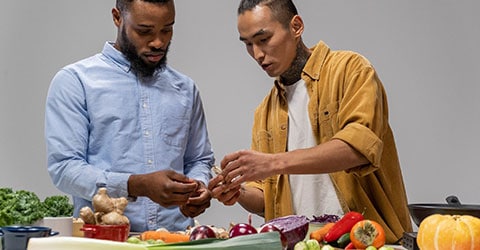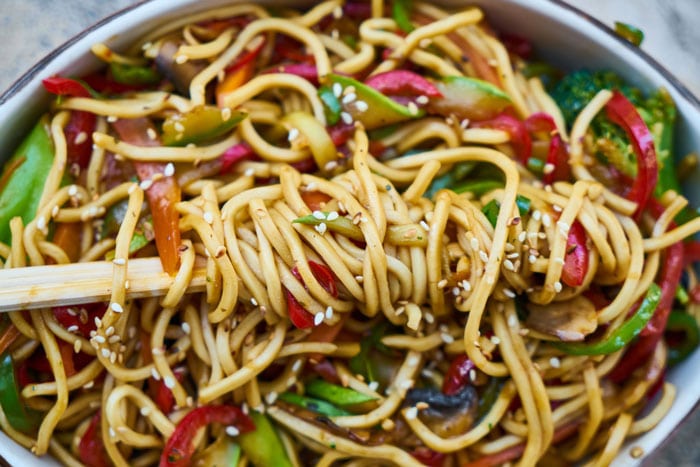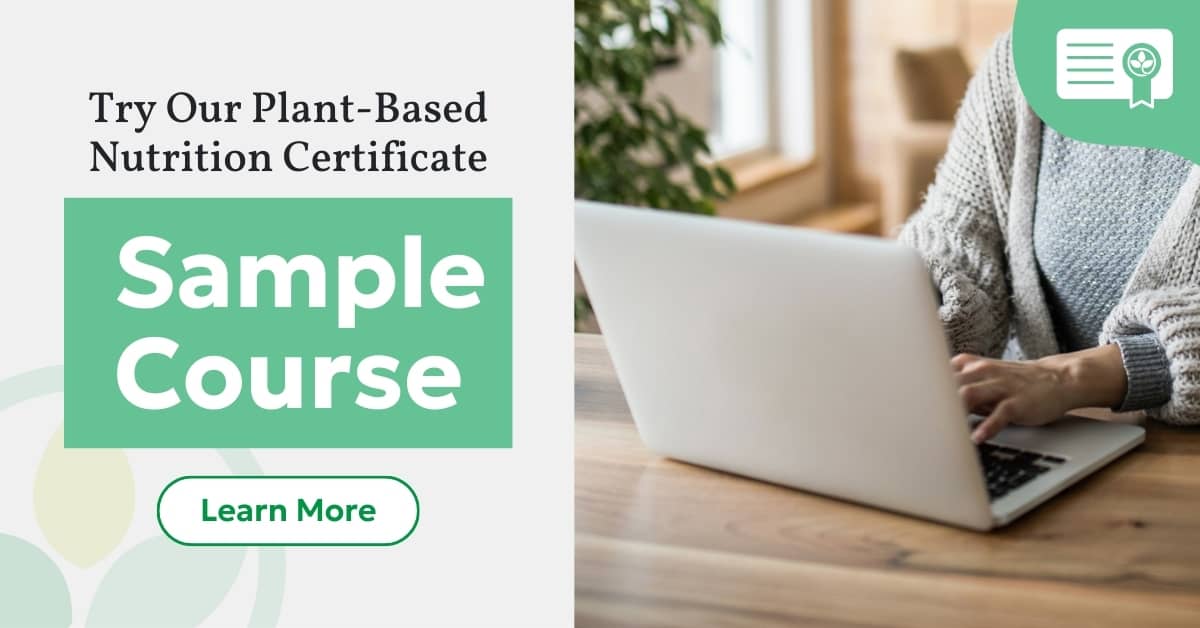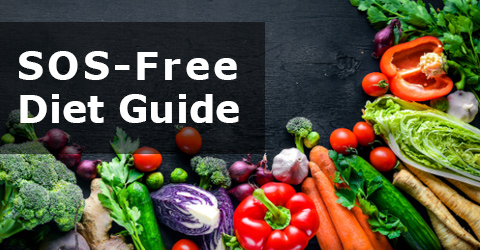

I hear this question a lot when someone decides to adopt a whole food, plant-based diet. My usual response is “eat healthier versions of the foods you love.” Tacos, pizza, meatloaf, hamburgers, and even hot dogs can be made healthy. How to do it is easier than you might think. You start by identifying what is unhealthy about your recipe, then replace the unhealthy ingredients with their healthier counterparts. The most laborious task you will undertake is learning to read the ingredient lists of any processed foods you buy and look for the whole food, plant-based counterpart for that ingredient. Here are foods you want to eliminate from your diet, followed by their replacements. To learn why we eliminate certain foods, consider taking the Plant-Based Health Mini-Course.
Foods to eliminate from your diet:
- Animal foods. As it is often described, “anything that has a mother” is off-limits. These include meat, fish, eggs, dairy (milk, cheese, yogurt), and dairy byproducts (casein and whey). There are many healthy substitutes for dairy; plant-based milk is one example, but watch out for added oils, sugars, and other unwanted ingredients. Vegan cheeses can be high in fat and contain other processed ingredients. Many foods that you might at first think are plant-based can contain whey or casein.
- Oils and other processed fats. This list includes all cooking oils and margarines. And before you ask, yes, this list does include olive oil.
- Processed broken grains (flours). Broken whole grains are fine to eat, but grains that have had the bran and germ removed, and with it, the fiber and most nutrients, should be eliminated. Flours are used to make pasta, cereals, and baked goods. White flour is a good example of this type of food you want to avoid.
Look at your favorite recipes and see what it will take to turn them into whole food, plant-based masterpieces.
Now you can go through your favorite recipes and replace unhealthy ingredients with their healthy alternatives. Here is a list of my most used healthy substitutes for cooking.
- Cooking oil. I teach my students how to sauté without oil, and all my recipes describe this technique. Once you learn it, it becomes second nature.
- Fats and oils in baked goods. Unsweetened applesauce is my favorite fat substitute in baked goods. It is usually a one-to-one replacement, but there are many fat substitutes that are also acceptable. Mashed bananas and silken tofu are a couple of examples.
- Egg replacers. An egg substitute in many baked goods is aquafaba. Aquafaba is made from the leftover cooking liquid from chickpeas and other legumes. Other popular egg replacers include flax seeds and silken tofu.
- Milk. The grocery stores are flooded with animal-milk substitutes made from plants such as almonds or oats. Just be sure to watch out for added fats and sugars in these plant-milks.
- Cheese. Most vegan cheeses can be high in fat, so tread carefully when trying these foods. I make a low-fat cheese sauce that I use for dishes like macaroni and cheese, nachos, and even quesadillas.
- Sugar. If you eat sugar, you should eat only small quantities. Better yet, if you choose to eliminate sugar, there are many recipes using dried fruits like dates for sweeteners.
- Creamy sauces. I have used silken tofu throughout most of my career to make everything from mayonnaise to cream sauces for pasta. But many people cannot eat soy, or choose not to, so I learned how to make creamy sauces from vegetables like potatoes or cauliflower with great success.

Now comes the fun part: look at your favorite recipes and see what it will take to turn them into whole food, plant-based masterpieces. You can view examples of healthy recipes on our website to get you started. I’d love to hear how you make your favorite recipes healthier.
Copyright 2025 Center for Nutrition Studies. All rights reserved.
Deepen Your Knowledge With Our
Plant-Based Nutrition
Certificate
Plant-Based Nutrition Certificate
- 23,000+ students
- 100% online, learn at your own pace
- No prerequisites
- Continuing education credits







